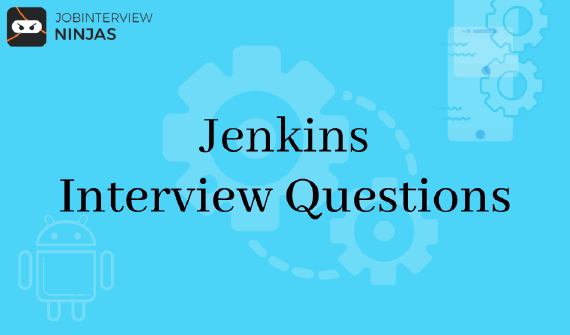
Top 40 Jenkins Interview Questions And Answers For Freshers/Experienced
If you are looking for a career in software development, then Jenkins is definitely worth exploring. This widely used …

Here we have given the frequently asked Verilog interview questions for job interview Preparation. So, if you attending a technical job interview then you do require to prepare these Verilog Interview questions and answers. For upcoming 2022 job interviews, we have given questions for all levels i.e. freshers, intermediate, experienced to ace the job interview after preparing from these Verilog Interview Questions & Answers.
About Verilog: Verilog is a hardware description language (HDL) used in developing model electronic systems. With the help of Verilog, developers design and verification of digital circuits, analog circuits, mixed-signal circuits, and genetic circuits at a level of abstraction.
Also, prepare for Embedded C interview questions, Networking interview questions, and other language interview questions from here.
2. Who founded the Verilog programming language?
4. Name various variants of the VHDL?
6. Are Verilog and VHDL the same?
8. Differentiate between non-blocking and blocking in Verilog?
9. Explain Verilog full case statements and Verilog parallel case statements?
11. What is the Sensitivity list?
12. Tell the process to run blocking and non-blocking assignments?
13. Differentiate between a task and a function?
14. Explain the parallel case and full case statements?
15. Explain transport delay and inertial delay?
16. Tell me the way to write an FSM code in Verilog?
18. Between variable and signal, which will update first?
19. Explain freeze, deposit, drive, and force command in Verilog?
21. Timescale 1 Ns/ 1 Ps indicate what in a Verilog code?
22. Differentiate between $setup and $hold?
23. Which algorithm is used in creating a sine wave in Verilog?
24. Explain the repeat loop in Verilog?
25. Differentiate between == and ===?
27. Mention a Verilog code for asynchronous and synchronous reset?
29. Show a case example of infer priority register?
30. Tell the difference between Two Lines Of Verilog Code?
31. Why is it that "if (2'b01 & 2'b10)..." Doesn't Run The True Case?
32. Explain casex and casez statement?
34. Explain inferring latches and how to avoid them?
40. Explain rise, fall, and turnoff delays?
It is a Hardware Description Language (HDL) that represents a digital system like a network switch, a memory, a microprocessor, or a flip-flop. Verilog is primarily used to verify mixed-signal circuits, analog circuits, and the design of genetic circuits. Verilog is used in the design and validation of digital circuits at the register-transfer level of abstraction.
Verilog helps design mainly at these three levels of abstraction:
2. Who founded the Verilog programming language?
4. Name various variants of the VHDL?
6. Are Verilog and VHDL the same?
8. Differentiate between non-blocking and blocking in Verilog?
9. Explain Verilog full case statements and Verilog parallel case statements?
Verilog full case statements: These are statements in which binary patterns of every possible case expression can fit either a case item or default. If your assumed case statement does not affect a case default and is possible to find a binary case expression that doesn’t match any of the described case items, the case statement would not be viewed as full.
Verilog parallel case statements: It is a statement where it matches a case expression, just with a single case item. If you can locate a case expression that would match more than one case item, then it is called ‘overlapping case items,’ and it would be not parallel.
11. What is the Sensitivity list?
12. Tell the process to run blocking and non-blocking assignments?
13. Differentiate between a task and a function?
14. Explain the parallel case and full case statements?
Full case statement: It is a case statement in which all potential case expressions can be fitted with case default or case items.
Parallel case statement: It is a case statement in which it is likely to fit a case expression with a single case item. If you find a case expression that would fit more than one case item, the fitting case is named an overlapping or non-parallel statement.
15. Explain transport delay and inertial delay?
Transport delay: It is a kind of delay induced by the wires that link to the gates. Because of the wire’s resistance and inductance, it slows the signal.
Inertial delay: It is the time it carries for a gate to modify its output.
16. Tell me the way to write an FSM code in Verilog?
17. In a purified combinational circuit, is it essential to note all the inputs in the sensitivity disk? If yes, why?
18. Between variable and signal, which will update first?
19. Explain freeze, deposit, drive, and force command in Verilog?
Freeze: This command puts a value on the signal. This value stays the same throughout the simulation and can’t be overwritten by the simulation.
Deposit: This command is used to value the signal, but hold it until it is overwritten.
Drive: This command puts a value on the signal, and if it is edited by simulation, then it will ‘resolve’ to a new value.
Force: This is a powerful Verilog command that can drive signals at any timestamp of your simulation.
20. Create a Verilog code to change the contents of two registers with and without a temporary register?
With a temporary register:
always @ (posedge clock)
begin
temp=b;
b=a;
a=temp;
end
Without a temporary register:
always @ (posedge clock)
begin
a <= b;
b <= a;
end
Know the Interview Criteria of these MNCs!!!
21. Timescale 1 Ns/ 1 Ps indicate what in a Verilog code?
22. Differentiate between $setup and $hold?
23. Which algorithm is used in creating a sine wave in Verilog?
24. Explain the repeat loop in Verilog?
25. Differentiate between == and ===?
26. Explain these system tasks and their purposes? $display, $displayb, $displayh, $displayo, $write, $writeb, $writeh, $writeo.
The most used these System Tasks is $display. It can display strings, expression or values of variables.
Examples are:
$display(“Hello oni”);
-– output: Hello oni
$display($time) // current simulation time.
-– output: 460
counter = 4’b10;
$display(” The count is %b”, counter);
-– output: The count is 0010
$reset resets the simulation return to time 0; $stop stops the simulator and sets it in interactive mode where the user can write commands; $finish leaves the simulator back to the operating system.
27. Mention a Verilog code for asynchronous and synchronous reset?
28. Assume a triangle and on it, there are 3 ants on each corner and they are unrestricted to move along sides of the triangle, tell the probability that they will collide?
29. Show a case example of infer priority register?
30. Tell the difference between Two Lines Of Verilog Code?
31. Why is it that "if (2'b01 & 2'b10)..." Doesn't Run The True Case?
32. Explain casex and casez statement?
34. Explain inferring latches and how to avoid them?
Inferring latch signifies to reproduce last value when an unrecognized branch is specified. For example, to evade latches ensure that all cases are noted in case of statements if not case default is specified. In the same way, a latch is intimated in the IF statement if ELSE IF is not determined.
always @(s1 or s0 or i0 or i1 or i2 or i3)
case ({s1,s0})
2’b00 : out = i0;
2’b01 : out = i1;
2’b10 : out = i2;
endcase
In this code of 4to1 multiplexer, all combinations are not analogized and the default is also not used so a latch is presumed to reproduce the previous value.
$random is used to create random numbers to determine hidden bugs in a program. It returns a 32-bit number. When a function is called it yields a new random number each time. It can also include an argument that makes sure that the exact random number is developed each time the test is executed. The argument can be registered, integer, or time variable.
$random;
$random();
40. Explain rise, fall, and turnoff delays?
has min\typ\max values. Due to the variation in IC fabrication procedure these values are used.
Syntax:-
#(rise fall turnoff)

If you are looking for a career in software development, then Jenkins is definitely worth exploring. This widely used …

In this post, we will cover a few Linux interview questions and their answers. So, let’s get started. In this …